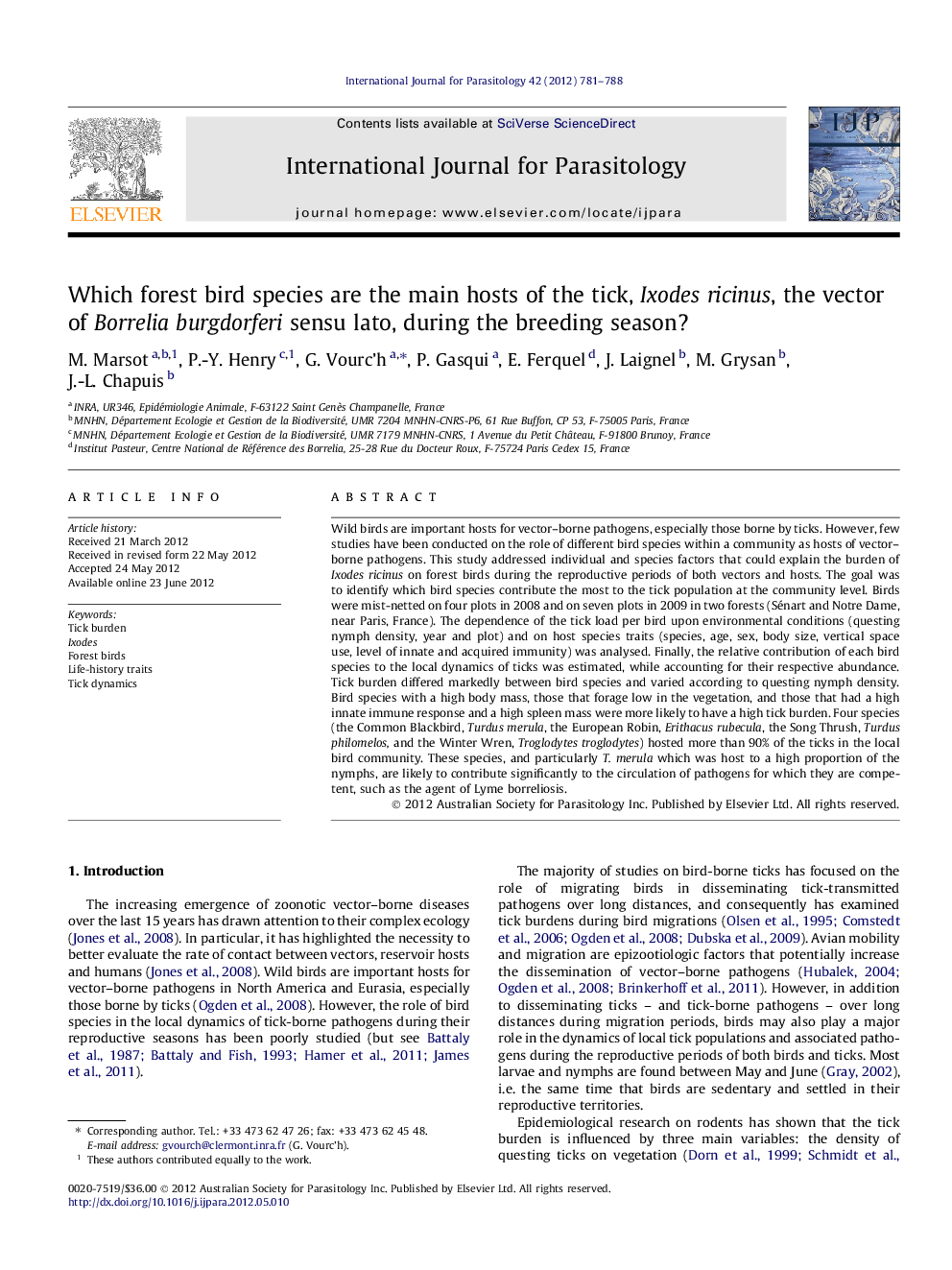| کد مقاله | کد نشریه | سال انتشار | مقاله انگلیسی | نسخه تمام متن |
|---|---|---|---|---|
| 2436081 | 1107269 | 2012 | 8 صفحه PDF | دانلود رایگان |

Wild birds are important hosts for vector–borne pathogens, especially those borne by ticks. However, few studies have been conducted on the role of different bird species within a community as hosts of vector–borne pathogens. This study addressed individual and species factors that could explain the burden of Ixodes ricinus on forest birds during the reproductive periods of both vectors and hosts. The goal was to identify which bird species contribute the most to the tick population at the community level. Birds were mist-netted on four plots in 2008 and on seven plots in 2009 in two forests (Sénart and Notre Dame, near Paris, France). The dependence of the tick load per bird upon environmental conditions (questing nymph density, year and plot) and on host species traits (species, age, sex, body size, vertical space use, level of innate and acquired immunity) was analysed. Finally, the relative contribution of each bird species to the local dynamics of ticks was estimated, while accounting for their respective abundance. Tick burden differed markedly between bird species and varied according to questing nymph density. Bird species with a high body mass, those that forage low in the vegetation, and those that had a high innate immune response and a high spleen mass were more likely to have a high tick burden. Four species (the Common Blackbird, Turdus merula, the European Robin, Erithacus rubecula, the Song Thrush, Turdus philomelos, and the Winter Wren, Troglodytes troglodytes) hosted more than 90% of the ticks in the local bird community. These species, and particularly T. merula which was host to a high proportion of the nymphs, are likely to contribute significantly to the circulation of pathogens for which they are competent, such as the agent of Lyme borreliosis.
Figure optionsDownload high-quality image (135 K)Download as PowerPoint slideHighlights
► Tick burden varied between individuals and species in reproductive forest birds.
► Tick load was primarily, positively related to questing tick density.
► Large species and those foraging low in the vegetation were the most parasitized.
► Only four species carried most of the ticks (>90%) in this community of bird hosts.
Journal: International Journal for Parasitology - Volume 42, Issue 8, July 2012, Pages 781–788